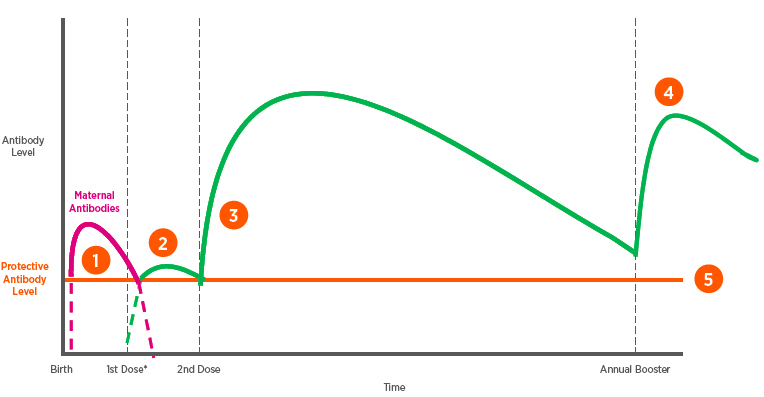Vaccination
Lambs should be vaccinated with a 3in1 or 6in1 vaccine. As a minimum lambs should be protected against pulpy kidney, cheesy gland and tetanus. The marking vaccination may only give protection for 6-8 weeks so a second injection is needed, normally at weaning. For pregnant ewes the booster should be given a month before lambing, as this will also provide immunity to the lamb through the colostrum.

Click here to view the video
- Maternal antibodies† in the colostrum can interfere with the vaccine, so it's important not to give some vaccines too early in life, until the maternal antibody level have dropped.
- The first dose of vaccine primes the immune system, but only provides a small amount of short-term protection. In some animals, there may be no protection at all from this dose.
- It's not until the animal is given the second dose of vaccine that the immune system is capable of providing protection against the disease. In most cases, this protection lasts 12 months.
- An annual booster dose is required to ensure the immune system of the animal continues to remain high for another 12 months. Without booster doses the animal is at risk of disease.
- This is the level of immunity required by the animal to provide protection against infection or disease.
*The first dose of vaccine may not confer protective immunity.
†Material antibodies are the proteins present in the colostrum, or "first milk" that provide immediate, but temporary protection for the new-born from infection. The amount of maternal antibodies an animal receives will vary and is influenced by the vaccination status of the dam.
This is a schematic representation to demonstrate the principles of vaccination.
Actual levels of antibody following vaccination will vary from vaccine to vaccine and animal to animal.